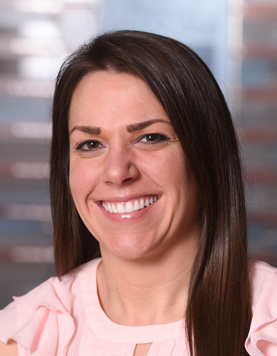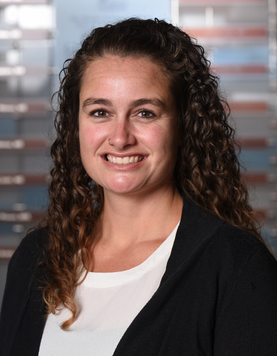what is a congenital diaphragmatic hernia?
Congenital diaphragmatic hernia (CDH) is a fetal abnormality that occurs very early in pregnancy (10 to 12 weeks), when the baby’s diaphragm does not form properly. The diaphragm is a thin muscle that separates the abdomen from the chest, and it plays an important role in breathing.
This defect happens when the muscles in the diaphragm don’t form together properly when the fetus is developing in your womb, leaving a hole. An opening in the diaphragm leads to contents of the abdomen—such as the stomach, small intestine, spleen, liver, or kidney—developing in the chest cavity instead of the abdomen. The hernia usually occurs on the left side, but can also occur in the right side. The displaced organs push on the lungs and prevent them from developing properly (pulmonary hypoplasia). Other developing organs can be affected as well. The pressure from the intestines also makes the heart go slightly to one side of the fetus’s body (usually to the right side). This condition may also result in increased amniotic fluid, called polyhydramnios, which can lead to preterm birth.
This condition affects about 1 baby out of every 2,500. CDH is not related to anything the mother did or did not do during pregnancy.
With proper treatment and care, most babies (70 percent) with this condition survive. It’s possible that your baby will need long-term care. We will do our very best to take care of your baby and answer any questions you have.
how is it diagnosed?
An ultrasound will show your doctor if your baby has this condition. This usually happens around week 18 of pregnancy but it can happen later. During the ultrasound, your doctor will look at your baby’s chest and stomach very closely to look for subtle signs of a congenital diaphragmatic hernia.
If your doctor thinks it’s possible your baby has this condition, your next step might be a high-definition ultrasound or a fetal magnetic resonance imaging (MRI) scan. The high-definition ultrasound will show your baby’s lung-to-head circumference ratio (this ratio helps predict how severe your baby’s lung problems could be). The MRI will help show your doctor the position of your baby’s liver and measures the amount of normal lung tissue.
Next, a fetal echocardiogram, or targeted ultrasound of your baby’s heart, may be performed by our fetal/pediatric cardiologist. You will also meet with a genetic counselor who may offer genetic testing to determine if a chromosomal abnormality has caused the CDH.
Occasionally, the condition will be diagnosed when your baby is born. A baby with a CDH will have a hard time breathing after he or she is born. Often babies with breathing problems will have a tube inserted into the airway be placed on a ventilator to assist with breathing.
how is a congenital diaphragmatic hernia treated?
This condition is not usually treated before your baby is born. In consultation with your doctor, our team will closely monitor your pregnancy, with frequent exams especially in the last trimester. The majority of babies with CHD can be delivered vaginally, but your doctor will work with you to develop the safest birth plan for you and your baby. There are experimental in-utero treatments for CDH. These treatments present unique risks and are performed at only a select few hospitals in the United States. Our team will discuss this option with you, help determine if your baby is a candidate and we will facilitate a referral if you desire more information about in-utero treatment.
Our nurse navigator will help you schedule prenatal consultations with neonatologists and other pediatric specialists (cardiologists, pediatric surgeons, etc.) so you will feel more prepared for what will happen after your baby is born. It may be helpful to tour our newborn intensive care unit (NICU) to become familiar with where your baby will be treated after birth.
A team of newborn specialists will attend your delivery and provide immediate care to your baby. Often babies with CDH have a very difficult time breathing and require intubation (a tube placed into the airway) this will allow the team to breath for your baby if he or she is having problems. A tube will also be placed through the nose or mouth into the baby’s stomach this allows any air or fluid to escape and prevents additional pressure on the lungs. Because your baby cannot be fed immediately, an intravenous line (IV) will be placed. Sometimes the blood vessels in the umbilical cord are used as a pain free way to provide essential nutrients and medications to your newborn. Once your baby is stabilized, he/she will undergo further evaluation. Multiple tests (blood tests, x-rays and/or ultrasounds) will be performed to help identify any other problems and to help the team make a treatment plan.
All babies with this condition need surgery. This is usually done a few days after birth when your baby is more stable. The pediatric surgeon will return the abdominal organs to the abdomen and repair the hole in the diaphragm. This can be done through an incision just below the rib cage or using a minimally invasive approach. Dayton Children's has all of the advanced, state-of the art equipment to do this complex, minimally invasive surgery on newborns. After surgery your baby will return to the NICU for ongoing care. Pain control is important to us and we take extra measures to ensure your baby’s comfort.
how will a congenital diaphragmatic hernia affect my baby during and after surgery?
After surgery the baby will need to remain on the ventilator for a while and will be weaned off based on how the baby is breathing. Babies often require supplemental oxygen into the nose after the ventilator is discontinued. The IV will remain in place to provide nutrition and medicine until the baby is well enough to begin feedings into the stomach. Often initial feedings are provided through a feeding tube that passes through the nose or mouth to the stomach. As the baby gets stronger and more stable, formula feeds and/or breast feeding may be introduced. Feeding is a challenge for babies who have undergone surgery, so bottle or breastfeeding may be increased very slowly. Speech therapists will work with your baby to improve his or her feeding skills.
It’s hard to predict how much time your baby will need to stay in the NICU. You’ll be able to take your baby home once he or she is gaining weight, his or her lungs are functioning properly and he or she is feeding well. After you and your baby go home, you will have several follow up appointments to monitor your baby’s progress. Typically the baby will be followed by your primary care provider, your baby’s surgeon, a pediatric pulmonologist, a nutritionist, developmental specialists and other pediatric specialists depending on your baby’s needs.









